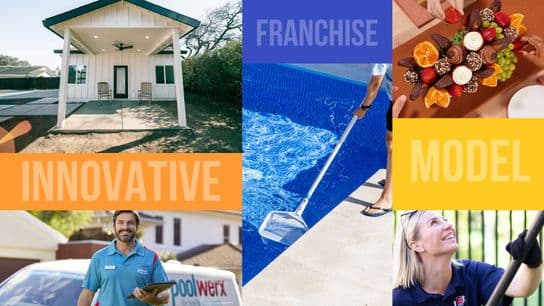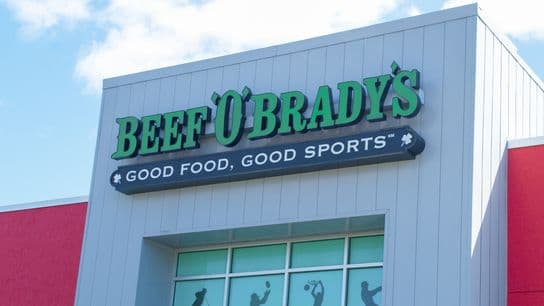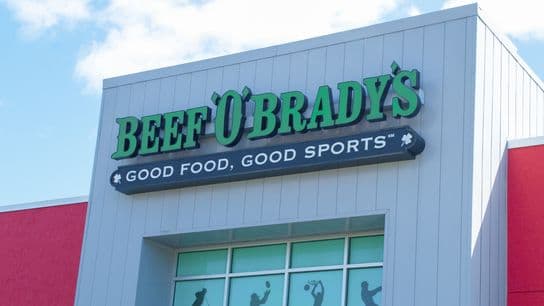What Massachusetts’s Economic Outlook Means for Franchisors
If you’re a franchisor looking to develop your business in Massachusetts, you’ll want to consider the state’s policy variables and growth rates when scaling your plans.
This summer, ALEC-Laffer published their annual Economic Competitiveness Rankings, which forecasts a state’s current standing within 15 state policy variables. The report features two different rankings: Economic Outlook — a forecast based on a state’s current standing in 15 state policy variables — and Economic Performance — a retrospective measure based on a state’s performance over a 10-year period from 2008 until 2018. For the state of Massachusetts, these rankings reveal a lot about where the state economy is going and where there is opportunity for its economy to grow.
- 2020 Outlook Ranking: 35
- 2008–2018 Performance Ranking: 18
The State
Although Massachusetts has a strong history in manufacturing, its economy has shifted to be strongest in the information and technology sector — specifically, biotechnology. That's why — in the era of a global pandemic — it's not surprising that the life sciences industry has been carrying the Massachusetts economy. During the 2008 recession, a Bloomberg report predicted cities like Boston and Worcester would rebound well because of universities and a strong healthcare industry. Now, economic drivers stem from Amazon’s recent growth in the state and, predominantly, innovations in biotechnology.
The pandemic is still taking a toll on Massachusetts’ economy, with at least 2,200 furloughs and permanent layoffs announced in the last week of August. Early September numbers show, however, that unemployment may be stabilizing. In the second week of September, there were 17,857 new unemployment filings in Massachusetts — a number that was down 800 from just one week prior. Though Massachusetts isn’t out of the woods, the state appears to be on a path to recovery.
Making Sense of the Data
What does this mean for Massachusetts’ economy? To start with the Economic Performance report, the index shows that within the past 10 years, Massachusetts has been outperformed by only 17 other state economies. The performance index is based broadly on a state’s performance within State Gross Domestic Product (GDP), Absolute Domestic Migration and Non-Farm Payroll Employment. Massachusetts scored highest in State GDP with a growth rate of 46.6 perfect, ranking them sixth among the other 49 states. The Old Bay State also ranked 16th for Non-Farm Payroll Employment with a growth rate of 10.4 percent. Where Massachusetts’ overall ranking suffered, however, was in Absolute Domestic Migration — the state lost a total of 125,348 in its overall population, ranking them 46th against other states. Although migration outwardly affected its ranking, the state has outperformed 32 other states in the past 10 years.
The Economic Outlook tells another story about the Massachusetts economy. The ranking is based on a state’s current standing in 15 state policy variables. Each of these factors, ranging from sales tax burden to state minimum wage, are influenced directly by state lawmakers through the legislative process. Overall, Massachusetts scored a 35 for outlook, a severe drop from its performance ranking. Broadly speaking, the state underwent major changes in taxation under new legislation that is predicted by ALEC-Laffer to affect its future performance. Massachusetts is also not a Right-to-Work state, which earned it a rank of 50 in that category.
The report indicates that, generally speaking, states that spend and tax less experience higher growth rates than states that spend and tax more. While this is an important finding for entrepreneurs looking to start their own business, it shouldn’t discourage them from investing in their dream franchise if they're in a market with a slower growth rate. For states like Massachusetts that tend to have higher minimum wage, ALEC-Laffer predicts a Massachusetts business will be slower to grow. However, that doesn’t mean franchisors should stave from growing in Massachusetts. With the right strategic planning, business opportunities are possible.
When it comes to deciding where franchisors should develop their brand, it’s always important to look at the complete picture of what the region has to offer. In a state where education and information technology are king, franchisors that engage in those sectors can have rewarding opportunities. If Massachusetts can stay on pace to come back from the pandemic, growth is still possible.
Franchise Growth Plans
So what should franchisors do with this information? Though most franchisors take a shotgun approach — meaning wherever a prospect franchisee inquires, the franchisor will typically entertain that marketplace — the strategy of looking at these overall policies can help them scale their business at a more efficient rate. With that said, the findings within the report should not be the deciding measure for franchisors, but they should play a role in the decision.
Sylvan Learning*
- Current units in state: 5
- Growth capacity in state: 26
- Total jobs created at max growth capacity: 260
John McAuliffe, Sylvan Learning CEO, seconded the notion of strategic growth. According to the early education franchisor, the state has opportunities for the right businesses that currently fit the needs of the population.
“We pick areas to focus our franchise development efforts based on demographic data we receive from our mapping system provider,” said McAuliffe. “We look for areas with a high concentration of families with school-age children whose annual income is $50k or above. We also look at some other factors such as shopping centers, where tutoring centers can be located, schools and competition.”
Big Blue Swim School*
- Current units in state: 0
- Growth capacity in state: 5
- Total jobs created at max growth capacity: 175
Scott Thompson, chief development officer of Big Blue Swim School, said data is everything when it comes to development.
“We look at the data first,” said Thompson. “The metrics we typically look at are total target addressable market "TAM" for the brand, typical penetration rates of "TAM", number of customers needed to have a successful unit model, total density of customer base, discretionary income, median income, and median home values. These are just a few metrics we look at before we select a market to grow in.”
FYZICAL Therapy & Balance Centers
- Current units in state: 6
- Growth capacity in state: 13
- Total jobs created at max growth capacity: 78
Chief Development Officer of FYZICAL Scott Wendrych told 1851 that their brand also looks heavily at data and what opportunities exist as a result.
“FYZICAL serves a very diverse population base with patients as young as toddlers up to folks in their 90’s,” said Wendrych. “That our typical client is between 30 – 70 years old. While income levels are a factor we look at they are not a primary driver. We typically look at the percent of the population over the age of 50 along with areas that have larger employers with good benefits packages. Being around areas that are healthcare hubs is also a consideration for us so proximity to doctors offices and hospitals is also taken into consideration.”
Atomic Wings*
- Current units in state: 0
- Growth capacity in state: 5+
- Total jobs created at max growth capacity: 75+
New York-based chicken franchise Atomic Wings’ CEO, Zak Omar, said growing concentrically within the region makes the most sense for their brand to capitalize on brand recognition.
"We have great brand recognition in the Northeast,” said Omar. “We've done a brand survey in the tristate area, and we realize that our brand awareness is strong within those states. That's why it's not a reach for us to expand up and down the East Coast. It's similar to what Dunkin' did when they first started expanding -- we're going to build our base and then take on major markets to the West. We've done well in the largest city in America, so we're looking forward to taking that model and getting it up and bringing it to other metropolitan areas and suburbs as well."
Franchise Brands Headquartered in Massachusetts
- 24seven Vending (US), Inc.
- 5 & Diner
- All Tune and Lube
- American Ramp Systems
- Au Bon Pain
- Baskin-Robbins
- Chyten Educational Services
- Cosi, Inc.
- D'Angelo Sandwich Shops
- Driven Landscapes
- Dunkin' Donuts
- Eliza J
- Extra Innings
- Fantastic Sams
- Friendly's Restaurants
- Honey Dew Donuts
- Hot Harry's Fresh Burritos
- Koko FitClub
- Kwench Juice Café
- Lapels
- Learning Express Toys
- MaidPro
- Math Monkey
- MiniLuxe
- Mosquito Shield
- Paint Nite
- Papa Gino's
- Pressed 4 Time
- Rooter-Man
- Snip-Its
- Thriveworks
- UFood Grill
- Uno Chicago Grill
- Wahlburgers
- Wings Over
*This brand is a paid partner of 1851 Franchise. For more information on paid partnerships please click here.









